Features
Mario Kart and the Costs of Lowering the Skill Ceiling
Many controversial Mario Kart techniques have been removed in later entries, which ends up making them less mechanically engaging.
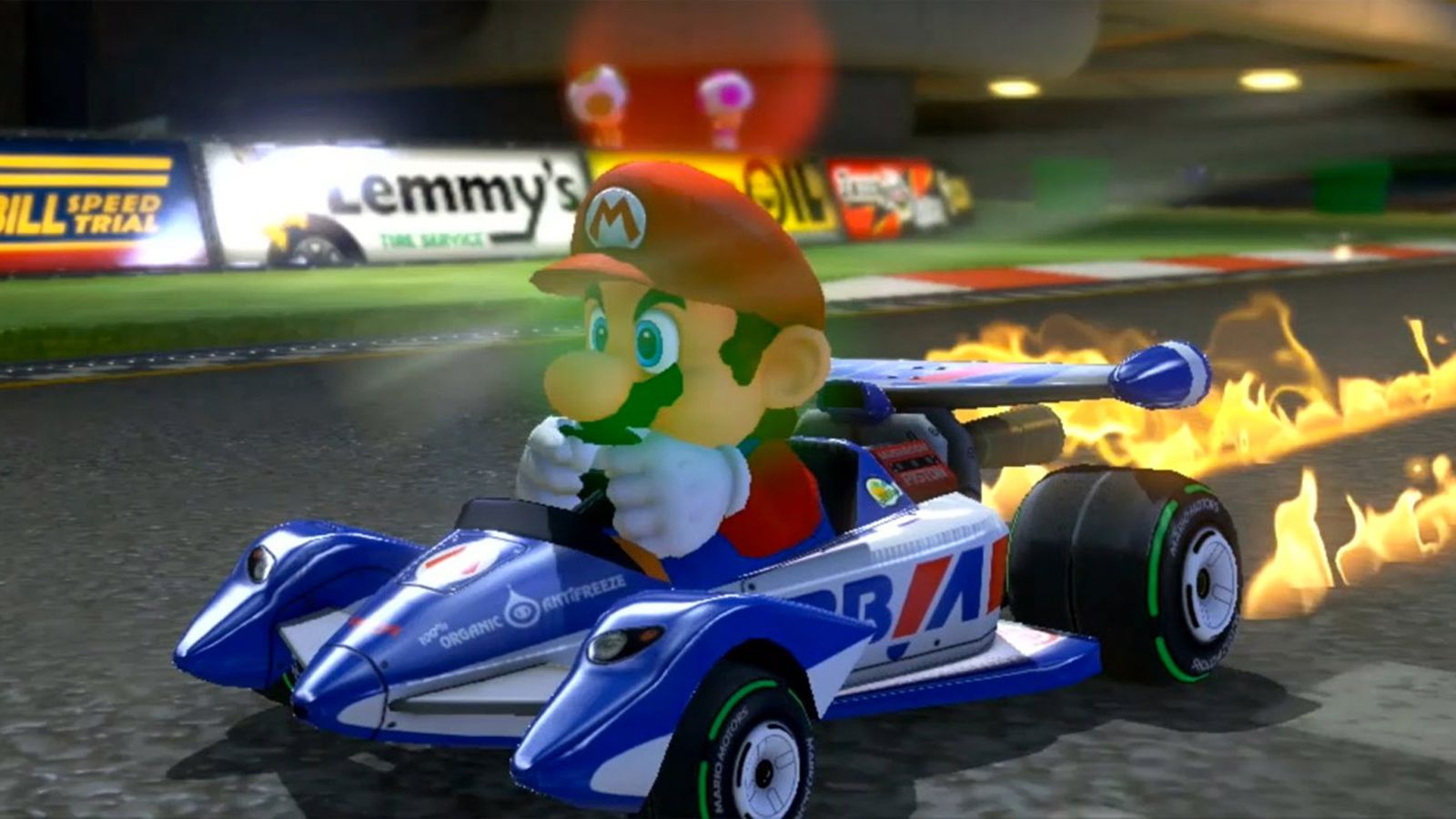
Ever since the DS entry, fans of the Mario Kart series have debated extensively over the use of advanced techniques and unintentional exploits. These exist in nearly every title that isn’t a rhythm or puzzle game, but since Mario Kart is designed for everyone to be able to pick up and play no matter their skill level, it’s only natural that these would attract some controversy. Some of the series’ most infamous advanced techniques have dominated online play, putting players who are unable to master them at a severe disadvantage. Having a technique be so useful as to effectively ruin the online experience for some players is a valid concern, but the ways in which Nintendo addresses these problems is counterproductive.
Historically, whenever a potentially problematic technique surfaces, Nintendo tends to simply remove it in the next entry altogether while adding much less engaging mechanics in an attempt to compensate. This strategy ultimately hurts the series more than it helps; these techniques, once mastered, could significantly improve the enjoyment of their respective titles, to the point where passionate communities have risen because of them. Although the downsides of these mechanics are very real, their benefits are difficult to ignore, and it would boost the series’ appeal if Nintendo consciously implemented and balanced certain techniques in future installments.
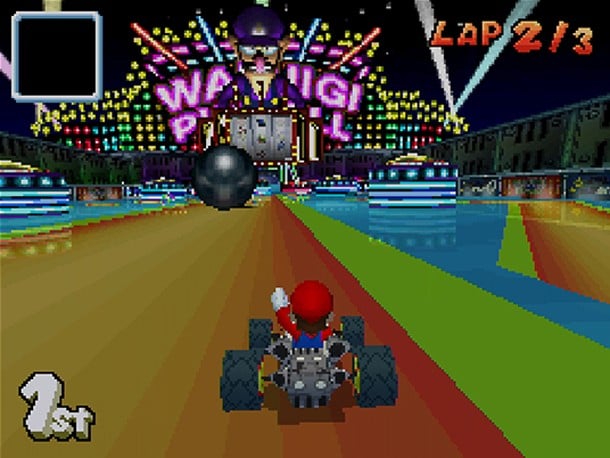
The Rise of Snaking
The trick that initiated this controversy also happens to be one of the most infamous: snaking. In several earlier Mario Kart games, players could charge up small boosts of speed by performing a drift, pressing left and right repeatedly, and letting go of the drift button. If players alternated between drifting left and right and quickly charged speed boosts with each drift, they could drive much faster than normal, especially on straightaways. This trick, dubbed snaking, was technically possible to perform ever since Mario Kart 64, and it would become prominently used in Mario Kart: Double Dash’s time trial mode. But it was Mario Kart DS that turned snaking into an exceptionally powerful technique. Due to the tighter controls, stronger drift boosts, and peculiar quirks with the handling of vehicles, players who used a kart with a low drift stat could blast through tracks with this technique and perform several unintended shortcuts and tricks.
On its own, snaking increases the replayability of Mario Kart DS exponentially. It gives drifting a purpose outside of its intended use and it grants players a greater degree of flexibility in how they navigate each track. It transforms the normally easygoing Mario Kart gameplay into a much more fast-paced and thrilling experience, and it raises the title’s skill ceiling to a respectably high level. Players can be very efficient at snaking and still feel like there is more room to grow; this feeling makes the gameplay feel much more substantial than it would otherwise. Snaking also has the added benefit of making the three-star ranking for each Grand Prix cup much more achievable, especially compared to other entries where obtaining the ranking on higher difficulties often comes down to luck.
That being said, Mario Kart DS was also the first Mario Kart title to feature online play, and it was here where the issues with snaking became all too clear. Since Mario Kart is intended to be a mostly casual experience, the series is designed to give everyone at least a small chance of victory, mainly accomplished through the item system. But the skill gap created by snaking was so large that less experienced players had essentially no chance of catching up even with powerful items on hand. Theoretically, since snaking increases the chance that players will bump into walls or obstacles by mistake, that could make it a risky technique to use. But in practice, if a player picked a kart with reasonably high acceleration and off-road stats, then even relatively sloppy snaking could easily beat those driving normally. Snaking also effectively rendered any vehicle without a low drift stat obsolete since it couldn’t perform the technique as efficiently.
It’s easy to say that struggling players should just learn how to snake, but considering how taxing it can be on the thumbs and hands, not everyone can perform it. Even for those who can snake, the physical strain it can cause may have lessened enjoyment of the game for some. These issues effectively created a fierce divide between players who thought that snaking was a legitimate technique and those who thought it was cheating. This controversy was significant enough that Nintendo would inevitably address it in the following entries.

Bikes Enter the Fray
In Mario Kart Wii, Nintendo curtailed snaking by overhauling the drifting mechanics. Rather than pressing left or right repeatedly, charging up boosts is based on the length and angle of the drift. Nintendo would use this drifting system for every main installment afterwards, and it’s a much less mechanically interesting system. It succeeds in nullifying snaking as a viable strategy and it’s much less taxing on the hands, but the limitations placed make it much harder to drift on straightaways or other unintended areas, making it less flexible overall.
This ultimately would not hurt the title much, however, as Mario Kart Wii introduced a notable X factor in the form of bikes. This vehicle class differentiates itself from karts in some meaningful ways. Bikes can perform wheelies that can strategically be used to gain more speed. This simple trick gives players options to consider even on straightaways, and they come to a dead stop if other players bump into them while performing it, making it a valuable but risky technique. Some bikes can even perform inside-drifts in place of the standard outward drifts, giving players much more control over their vehicle than normal. These features already spice up the gameplay considerably, but what really puts Mario Kart Wii over the top is the sheer number of advanced techniques available. Delay drifts, chain wheelies, and chain drifts are just a few of the ways expert players can gain more speed, and unlike snaking, they are not powerful enough to completely leave beginners in the dust. These advanced techniques, whether intentional or not, end up meaningfully raising the skill ceiling without making the controls more complicated or sacrificing accessibility.
Unfortunately, Mario Kart Wii is much less successful when it comes to balancing. Bikes end up being so useful that they make karts almost completely obsolete in high-level play. The only advantage karts have over bikes is a higher-level drift boost, which is not nearly enough to compete with the bikes’ myriad options. On top of this, inside-drifting bikes are objectively superior than outside-drifting vehicles since they can take tighter turns much more easily. As a result, inside-drifting bikes ended up attracting a similar level of ire as snaking. It was not uncommon to enter a race filled with an army of bike-riding Funky Kongs tearing through the track at speeds incredibly difficult to keep up with using a kart or even an outside-drifting bike.
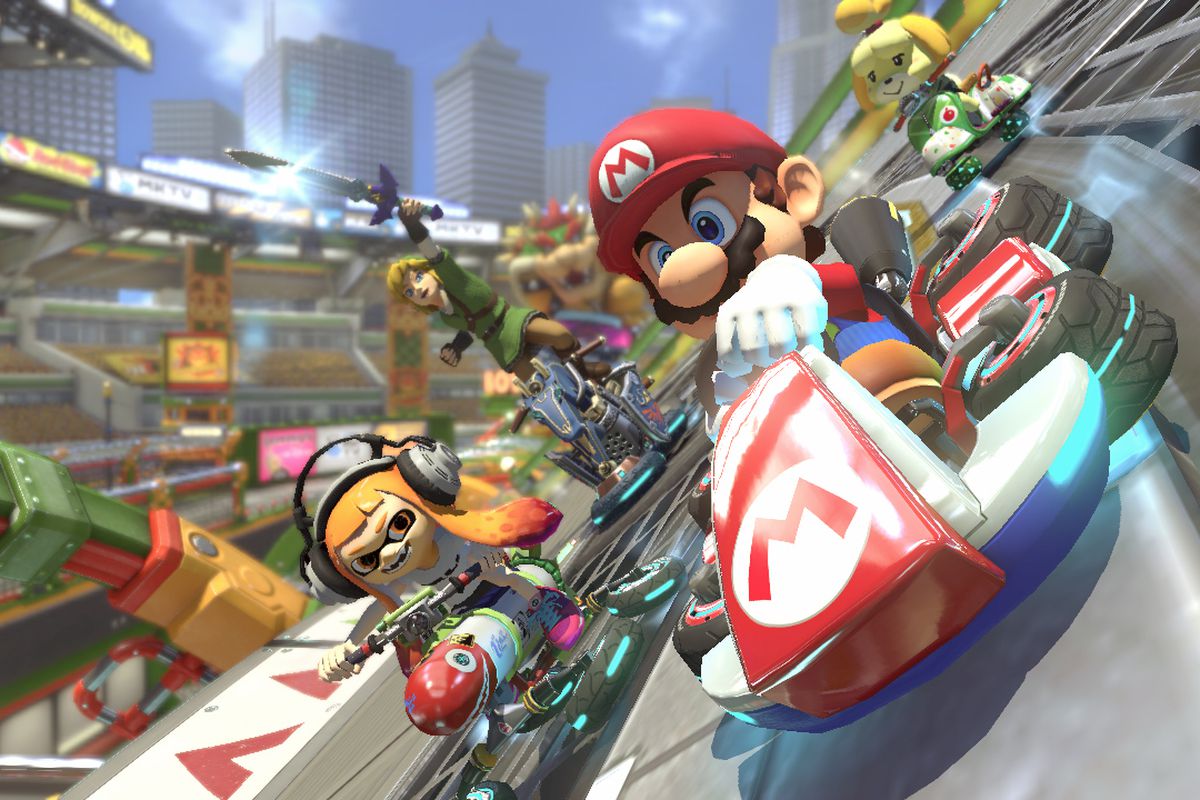
The Downhill Turn
The following entry, Mario Kart 7, removed bikes altogether, and some of the advanced tricks in Mario Kart Wii left along with them. Some of these changes can be chalked up to Nintendo wanting a simplified experience on a handheld or even the memory limitations of the 3DS. It was with the next entry, Mario Kart 8, where Nintendo’s efforts to lower the skill ceiling would really become apparent. Bikes do return in this title, but the wheelies are completely removed, and the inside-drifting bikes drift at an extremely awkward angle that is frankly unfun to use. The title introduces a new vehicle class in the form of the ATV, but they handle essentially the same as karts. These changes certainly make the vehicles more balanced, but they also make them much less mechanically distinct and engaging. Although the game has a few advanced techniques of its own and some of the ones from Mario Kart Wii remain, several others are nowhere to be seen. Mario Kart 8 even inexplicably nerfs the glider mechanic from Mario Kart 7. Players in 7 have a great degree of control over the glider’s pitch, and managing it effectively could lead to several interesting shortcuts. Players cannot influence the glider’s pitch in 8 to anywhere near the same degree, so it essentially serves as little more than a glorified set piece outside of a few shortcuts.
Despite all of these efforts to simplify the game, one controversial technique managed to sneak in. Fire hopping, which involves repeatedly hopping left and right in the middle of a boost, was nowhere near as powerful as snaking from DS or the bikes from Wii. The resulting boost in speed was relatively slight, and it did not work on every surface. But it still offered expert players a noticeable advantage and it was in all likelihood an unintended exploit, so players debated the legitimacy of this technique as well. Nintendo later patched out this trick in Mario Kart 8 Deluxe. This rerelease gives players a third tier to the drift boost instead, which does little to fundamentally change how simplistic the drifting mechanics are.
The removal of fire hopping is arguably not a huge loss, if only because of how strange it looks, but it nonetheless highlights Nintendo’s tendency to remove or simplify strategies that raise the skill ceiling if they create any controversy (or sometimes not even that in the case of the glider mechanics). Mario Kart 8’s 200cc mode at least gives expert players something to master, as its brisk pace creates a need to more carefully control speed as well as several opportunities to take otherwise impossible shortcuts. Outside of 200cc, Mario Kart 8 is streamlined to a fault. Other than the aforementioned techniques, there is little for players to do other than drift through the correct turns and take certain shortcuts, most of which are clearly developer-intended rather than performed from scratch by the player. The skill ceiling is not insignificant, but there is much less room for player expression than ever.
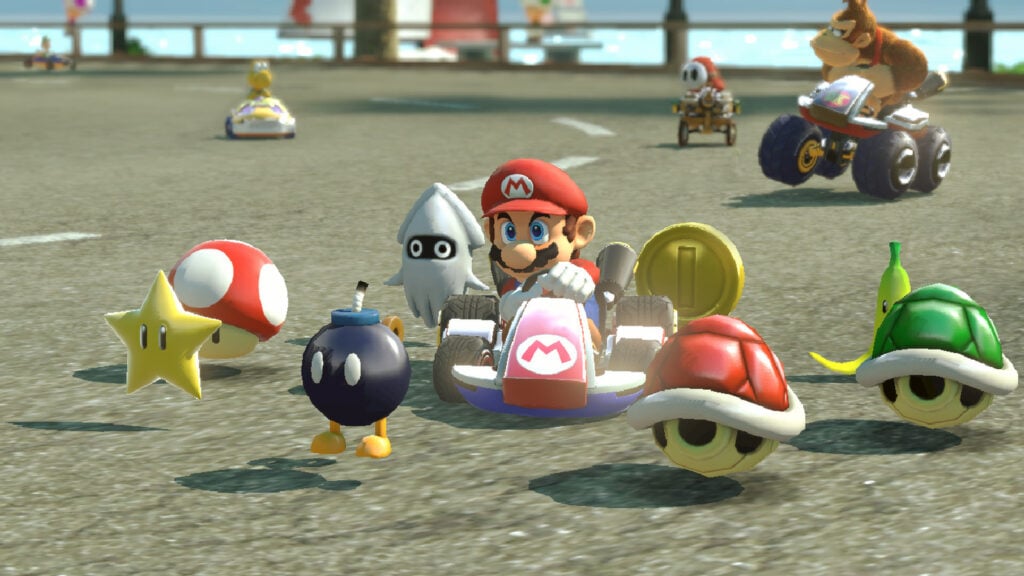
What Can Be Done From Here
Despite these issues, it’s clear from Mario Kart 8’s overall reception that this perspective is not shared by most people. Mario Kart 8 Deluxe in particular is one of the most critically and commercially successful titles in the series, which leaves Nintendo little immediate incentive to substantially alter future titles to accommodate such a niche perspective. And aside from niche groups, most of Mario Kart 8’s current playerbase is having an incredible time with the game as is, so it’s clear that the title succeeds in bringing both casual and hardcore players together. But it is still possible to increase the mechanical complexity in future titles without making them less fun for casual players. A skill gap will still exist no matter how hard Nintendo tries to narrow it, so it would benefit the series to embrace this reality and include advanced techniques while balancing them more carefully.
Rather than removing a controversial technique, Nintendo can canonize it and rebalance it so casual players aren’t alienated by it. Rather than making bikes nearly identical to karts, Nintendo can give karts unique mechanics of their own so they can remain viable. Rather than creating a single technique that overcentralizes the gameplay, Nintendo can implement other equally vital techniques to give players more meaningful options. Rather than forcing players of wildly differing skill levels to compete with each other online, Nintendo can implement a skill-based matchmaking system so that players can enjoy the game how they like without affecting others’ experiences. These options all exist to make the perfect Mario Kart title, one that appeals to all players without compromising on its potential.
If there is any evidence that advanced techniques can be extremely beneficial to a Mario Kart title, look no further than the Mario Kart Wii community. The game quickly gained a significant online following on top of its staggering sales figures, and even after Nintendo shut down the online servers, a player named Wiimm created a custom server so that players could continue enjoying the game online. Modders created numerous custom tracks for the game, and players gradually learned more of its surprising mechanical intricacies over the years. Even after the release of Mario Kart 8 Deluxe, many players continued to stick with Mario Kart Wii due to these intricacies and are still playing fiercely competitive matches to this day.
Last year, the biggest Mario Kart tournament ever took place in the form of EndGameTV’s 2020 Mario Kart Wii World Cup, which marked a massive step toward Mario Kart Wii becoming a viable esport. Robust online support and a strong mechanical foundation led to Mario Kart Wii garnering a passionate competitive scene that has lasted far longer than anyone anticipated, and Nintendo could ideally capitalize on the series’ apparent esports potential in future titles. Of course, this likely will not happen in the near future, as Nintendo has a notoriously insular attitude when it comes to its IPs. But if Nintendo changes this attitude, creates a mechanically rich yet accessible Mario Kart title, and makes a concerted effort to push its competitive scene, then Mario Kart’s worldwide appeal could become that much greater.

-

 Features4 weeks ago
Features4 weeks agoDon’t Watch These 5 Fantasy Anime… Unless You Want to Be Obsessed
-

 Culture3 weeks ago
Culture3 weeks agoMultiplayer Online Gaming Communities Connect Players Across International Borders
-

 Features3 weeks ago
Features3 weeks ago“Even if it’s used a little, it’s fine”: Demon Slayer Star Shrugs Off AI Threat
-
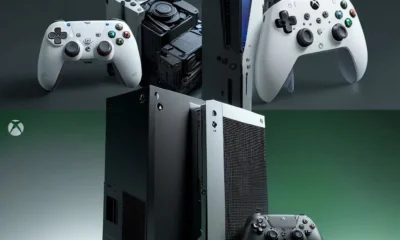
 Features1 week ago
Features1 week agoBest Cross-Platform Games for PC, PS5, Xbox, and Switch
-

 Game Reviews3 weeks ago
Game Reviews3 weeks agoHow Overcooked! 2 Made Ruining Friendships Fun
-

 Game Reviews3 weeks ago
Game Reviews3 weeks agoHow Persona 5 Royal Critiques the Cult of Success
-

 Features3 weeks ago
Features3 weeks ago8 Video Games That Gradually Get Harder
-

 Features2 weeks ago
Features2 weeks agoDon’t Miss This: Tokyo Revengers’ ‘Three Titans’ Arc Is What Fans Have Waited For!
-

 Features1 week ago
Features1 week agoThe End Is Near! Demon Slayer’s Final Arc Trailer Hints at a Battle of Legends
-

 Guides2 weeks ago
Guides2 weeks agoHow to buy games on Steam without a credit card
-

 Uncategorized2 weeks ago
Uncategorized2 weeks agoSleep Meditation Music: The Key to Unwinding
-

 Game Reviews1 week ago
Game Reviews1 week agoFinal Fantasy VII Rebirth Review: A Worthy Successor?






















